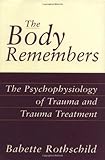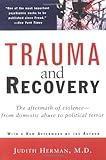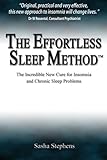Post traumatic stress disorder (PTSD) refers to the delayed reaction, sometimes for longer than 6 months, to a highly stressful or life threatening event. Often the causes for PTSD are myriad and distasteful, and more than 40 million women in America suffer from it. Although childhood abuse and sexual abuse is a common cause of PTSD, other events which cause psychological trauma can also trigger the disorder. These include life threatening accidents, wars or natural disasters.
PTSD usually occurs following a stressful or traumatic event that is highly severe, and often survivors and witnesses of such events will only start showing symptoms of PTSD after a few months. The reasons for this would be due to the event being perceived as dangerous and outside of the individual’s control, leading to feelings of helplessness and extreme anxiety.
Due to the severity of the event or disaster, the inability of the person to avoid or cope with the trauma is such that it results in PTSD. Due to the immense negative impact, the person will avoid any situation or trigger that might remind them of the event. Whilst it has been attributed to internal conflict, recent research has shown that these psychological conditions are actually due to past traumatic events. Further, it is likely that the extreme stress experienced during the event has resulted in physical damage to the hippocampus, the part of the brain that deals with the emotions of fear and stress.
For a person who is suffering from PTSD, any spur of event occurring can trigger manifestations and he will suffer from the traumatic event both physiologically and psychologically. There will be repeated flashbacks of the event, and being subjected to this experience will cause a behavioral change eventually. These take the form of amnesia, listlessness and a need to isolate themselves.
For children suffering from PTSD, they are likely to experience nightmares, memory fragmentation, hypertension, flashbacks, amnesia, panic attacks and some may turn to substance abuse to avoid memories of the event. Most victims will suffer from a range of effects, such as physiological, psychological, social and self destructive behaviors.
Physiological outcomes take the form of a change in the brain activity, structure and functioning, also known as neurobiological effects. There may also by psychophysiological effects, such as hyper arousal, increased propensity to be startles and increased neurohormonal changes which leads to greater stress and depression. It is often easy to overlook physiological outcomes as they take the form of physical issues such as headaches or lightheadedness and are treated accordingly.
Psychological outcomes include depression, anxiety disorders, eating disorders and dissociation, where the individual seeks to hide from the present by submerging into their selves. Other social indicators include low self esteem, substance abuse and an inability to form interpersonal relationships. At its extreme, the individual may turn to self destructive behavior and attempt suicide, or take part in self injury and risky behaviors that can lead to death.
If the individual is diagnosed with PTSD, there is treatment and help available in the form of stress medications and therapy. These aim to correct the physical, physiological and psychological effects experienced and aim to integrate the person back into their current lives.
| BUY NOW | BUY NOW | BUY NOW |
| BUY NOW | BUY NOW | BUY NOW |
| BUY NOW | BUY NOW | BUY NOW |
| BUY NOW | BUY NOW | BUY NOW |
| BUY NOW | BUY NOW |
| BUY NOW | BUY NOW | BUY NOW |
| BUY NOW | BUY NOW | BUY NOW |
| BUY NOW | BUY NOW | BUY NOW |
BUY NOW | BUY NOW | BUY NOW |
Health Benefits of Yoga for Women by James Pendergraft
There are a number of healthy benefits a women can receive from practicing yoga. Through this form of exercise women are able to build on their strengths and focus on bettering themselves through a calming method of breathing, meditation, and gentle poses.
Here are just some of the healthy benefits that women can get from yoga:
1) Yoga can help enhance your immune system and decrease chances of illnesses. It is believed that yoga can greatly enhance the function of your immune system. This will lead to the more effective curbing of a number of diseases that women normally get. Yoga is also known to be very effective in controlling the level of cholesterol in the body as well as a woman’s blood pressure.
2) For those women who can’t seem to find the time to perform exercises that will help control their cholesterol level and blood pressure, yoga could be very advantageous. This is because yoga makes use of breathing exercises and meditation that could help in calming down nerves that have been stressed by work or daily activities.
3) Yoga can help bring about a more healthy pregnancy. Although pregnancy brings with it a great deal of happiness, it can also lead to experiencing a lot of discomforts. Yoga can help alleviate these discomforts, which could include backaches, morning sickness, and mood swings. Yoga exercises can also help greatly in maintaining an ideal weight during pregnancy. There are different prenatal poses being practiced in yoga that are recommended for women who are pregnant. These are intended to aid women in preparing their bodies for their babies’ birth.
4) Yoga helps decrease pre-menstrual syndrome symptoms. Menstruation is known to cause a number of hormonal changes among women. These changes as well as the inconveniences they bring often make women uncomfortable. Because of these changes, pre-menstrual syndrome symptoms could also be experienced before, during, and after a menstrual period. These include cramps, mood swings, depression and irritation. These symptoms can be considerably reduced through practicing yoga, which has some poses that could aid in the reduction of pain during menstrual periods.
5) Yoga helps women deal with stress and depression. Because women are emotional in nature, it is expected that they fall victim to stress and depression more than men do. Yoga makes use of meditation, which is a great aid in decreasing the stress and tension levels in the body. Practicing yoga will also help stimulate positive levels of energy.
6) Yoga also helps make the body more flexible. Women tend to lose the flexibility of their bodies faster than men. This is because most of the work that really requires brute physical strength is done by men. Because of this, men’s muscles are known to remain more tight and flexible longer than those of the women. Aside from this, women also lose bone density faster than most men because of the rigors that they go through during childbirth, which could make them lose more calcium, thus leading to making their bones very fragile. Because of this, a woman’s body will begin to lose its flexibility during her thirties. However , this can be delayed by doing yoga exercises.
| BUY NOW | BUY NOW | BUY NOW |
| BUY NOW | BUY NOW | BUY NOW |




























